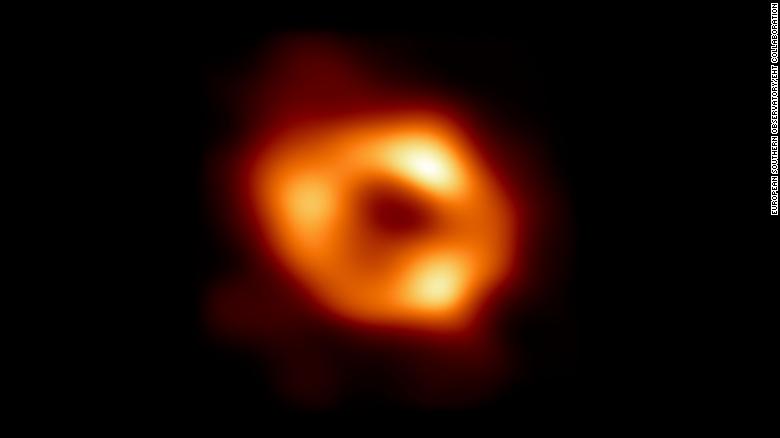Astronomers have captured the first image of Saggitarius A, the supermassive black hole located at the center of the Milky Way Galaxy.
The image offers irrefutable proof our galaxy orbits around a black hole, something scientists have theorized for decades based on observations of celestial objects orbiting what has, until now, looked like a gigantic void in the center of our galaxy.
The Event Horizon Telescope image shows light bending as it gets sucked into the infinitely dense object and an absence of light beyond the event horizon – the point at which nothing, including light, can escape.
“We were stunned by how well the size of the ring agreed with predictions from Einstein’s Theory of General Relativity,” said EHT Project Scientist Geoffrey Bower from the Institute of Astronomy and Astrophysics, Academia Sinica, Taipei. “These unprecedented observations have greatly improved our understanding of what happens at the very center of our galaxy, and offer new insights on how these giant black holes interact with their surroundings.” The EHT team’s results are being published today in a special issue of The Astrophysical Journal Letters.
The Event Horizon Telescope, named for light’s vanishing point, is a large telescope array consisting of a global network of radio telescopes. It captured the image from 27,000 light years away, the distance from Earth to the center of the Milky Way.
What It Means for Science
Implications of the image are vast. One of the most prominent phenomena scientists are able to study is the way black holes consume gas and light.
“We now see that the black hole is swallowing the nearby gas and light, pulling them into a bottomless pit,” Ramesh Narayan, a theoretical astrophysicist at the Center for Astrophysics said in a statement. “This image confirms decades of theoretical work to understand how black holes eat.”
The discovery and image are a result of several years of research by a number of scientists from different fields. More than 300 researchers from 80 institutions working with a network of eight different radio telescopes around the globe that make up the Event Horizon Telescope made the revelatory image possible.
“This image from the Event Horizon Telescope required more than just snapping a picture from telescopes on high mountaintops. It is the product of both technically challenging telescope observations and innovative computational algorithms,” Katherine Bouman, Rosenberg scholar and assistant professor of computing and mathematical sciences, electrical engineering and astronomy at the Caltech, said during a press conference.
EHT captured the first-ever photo of a black hole in 2019. The supermassive black hole M87, located 53 million light-years from Earth. If the supermassive black holes M87* and Sagittarius A were next to each other, Sagittarius A would be dwarfed by M87, which is over 1,000 times more massive.











